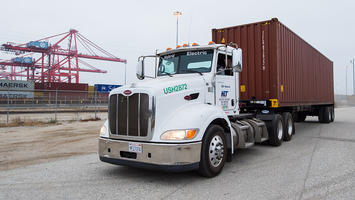
No state advertises its green credentials more than California. That these policies often hurt the economy, driving up housing costs and narrowing opportunities for working-class people while not even doing much for the environment, has not discouraged the state’s environmental overlords.
Consider the state’s insistence on electrifying transportation. Even as California reduces its reliable sources of power, notably nuclear and natural gas, it is mandating a statewide shift to all-electric medium- and heavy-duty trucks starting in 2024, with the goal of reaching 100 percent of all new sales, wherever feasible, by 2045. On top of other electrification mandates for light-duty cars and buildings, the new truck rule will further increase the state’s demand for electricity and raise rates, already among the nation’s highest. Since 2011, electricity prices have increased five times as fast as the national average. In 2017 alone, they increased at three times the national rate.
These policies have been devastating to poorer Californians, particularly in the less-temperate interior, where “energy poverty” has grown rapidly. Alternative energy sources like recycled natural gas and nuclear could lessen the pain, but the climate purists who dominate California policymaking find only wind and solar acceptable. Even some climate-change advocates caution that overreliance on intermittent, weather-dependent energy will push costs so high and lead to such massive land and environmental impacts that the public will turn against such policies. Time will tell.
Tragedy at the Port
The impact of forced electrification on working people, who have been rightfully praised for their critical and even heroic efforts during the pandemic can be glimpsed at California’s three major ports—Los Angeles, Long Beach, and Oakland. International trade, including exports and imports, supports nearly 5 million California jobs, nearly one in four of the state total. Yet the new electrical truck mandate will threaten the competitive advantage of these ports, and the jobs of the tens of thousands of blue-collar Californians who work at them.
Compared with very low-emission natural gas vehicles, large electric trucks are far more expensive, not yet readily available, and less capable of carrying loads for great distances, notes Weston Le Bar, CEO of the Harbor Trucking Association trade group. An electric truck, he notes, can cost four times that of a “near-zero” natural gas truck. The electric trucks can go at best 80 miles without stopping; a less expensive gas one can cover 500, greatly increasing efficiency.
Challenges including a lack of electric-charging stations, notes Jack Khudikyan, principal owner of Compton-based MDB Transportation, also make such vehicles impractical for longer hauls. He estimates the cost of running an electric truck is as much as seven times as high per mile than a near-zero vehicle.
The electric-truck mandate—California’s latest in a series of green strictures—will work to the benefit of rival ports such as Houston, which make no such demands on haulers. Over the past five years, California’s ports have lost a substantial portion of their North American container-market share, dropping from 35.5% to 30.2%, as shippers take advantage of the greater capacity of the upgraded Panama Canal to reach more user-friendly ports on the Gulf Coast. Current volume numbers are down 30% from 2018 levels.
Such losses could prove troubling in the future. Past experience shows that once supply chains are rerouted—as they have been during escalating tensions with China and the ongoing pandemic—they are notoriously hard to reverse. East Coast ports lost out to California on Pacific trade in the past, for example. And California greens shouldn’t delude themselves that the exodus to other ports will make any net difference in greenhouse-gas emissions—it will merely shift demand to new locations.
The biggest losers in California’s green port policy are minority entrepreneurs and blue-collar workers. Most of the roughly 18,000 drivers working at the Ports of Long Beach and Los Angeles are Latino, while the 4,500 in Oakland include large contingents of Indian-Americans. Some 1,800 small and sole proprietors, who dominate the trade, have little wherewithal to absorb the huge costs associated with electric trucks, forcing them out of business, in favor of larger rivals.
“Regulation like this drives consolidation,” Le Bar suggests. “One of our biggest fears is that the entrepreneurial character of the business is being destroyed…The regulators don’t care about the working class.”
Read the rest of this piece at Real Clear Energy.
Joel Kotkin is the author of the just-released book The Coming of Neo-Feudalism: A Warning to the Global Middle Class. He is the Presidential Fellow in Urban Futures at Chapman University and Executive Director for Urban Reform Institute — formerly the Center for Opportunity Urbanism. Learn more at joelkotkin.com and follow him on Twitter @joelkotkin
Photo credit: Dennis Schroeder/NREL via Flickr under CC 2.0 License.












